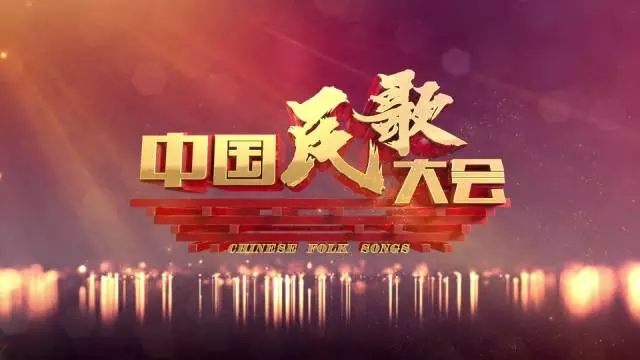CCTV News:China folk songs have a long history, from the book of songs "green and sweet, leisurely in my heart" to "the road is long, and I will go up and down in Xiu Yuan" in "Songs of Chu" and then to "Singing to wine, life geometry!" Up to now, China folk songs are vast and colorful. People of different nationalities and regions have developed their own characteristic folk songs because of their different development venation. The charm of folk songs lies in that they sing the flavor of life.

Now, on the stage of the folk song conference, 32 groups of native singers from all over the country have launched a map of China folk songs for the national audience, which integrates regional characteristics and competitive performances. This season’s "China Folk Song Conference" with the theme of "Tell the story of China well and sing the praises of the times" is divided into eight periods. Next, I will introduce you to the first period, "Rivers come up from the sky" (I).

Since ancient times, there has been a poet’s feeling: You don’t see how the Yellow River’s waters move out of heaven and entering the ocean, never to return. The Yellow River is known as the mother river of the Chinese nation. From ancient times to the present, the surging river water and fertile land in the Yellow River basin have nurtured generations of Chinese people, and the inheritance of the Yellow River civilization is also the inheritance of the Chinese nation’s history.
In this program, four groups of singers from Shaanxi, Shanxi, Qinghai and Ningxia will lead the audience all over the country to feel the rushing of the Yellow River. In their songs, whether it is folk songs in northern Shaanxi or flowering tunes in Zuo Quan, whether it is "flowers" in Qinghai or "oral strings" in Ningxia, they are full of the wisdom of working people.

First of all, let’s walk into northern Shaanxi and enjoy the high-pitched singing of the loess plateau. Some people say, "Only when you go to northern Shaanxi will you know what the real Chinese culture is." There, generations of men sang their joys and sorrows with their songs, and sang stories that their ancestors had experienced in this yellow land.
"Pray for Rain" conveys a desolation and a kind of pressure that people feel in front of nature, while "Shandandan Blooms in Red" expresses the hope and warm welcome of people in northern Shaanxi to the Red Army to the fullest.

Then turn your eyes to Shanxi to see those people who love life and folk songs. Shi Zhanming, a Shanxi singer, brought a poem "Peach Blossoms, Red Apricots and White Flowers" with his love for his hometown. This is an authentic "Zuo Quan Flowering Tune", and the interlinings and sentences in the song composed of local dialects are all unique.
As early as 2006, "Zuo Quan Flowering Tune" was included in the first batch of national intangible cultural heritage list. The tune of "Flowering Tone" is euphemistic and delicate, with regular rhythm. In its hometown, everything used as a metaphor can "blossom", which is also a way of inheriting folk songs, kneading folk songs into life and blending them into stories.

There are so many "flowers", let’s listen to the "flowers" in Qinghai again. The "flower" in Qinghai is known as the soul of the northwest, and it is generally called "diffuse flower" in the local area. Rich lyrics, like an encyclopedia. In this programme, Sonan Bin Sun, a Tibetan boy, performed Flowers and Teenagers and Snow-white Dove together with the beautiful girl Wu Yulan.
"Flower" generally has a "Quling", which is equivalent to the "Qupai" of the Han nationality. The tune is unchanged, and the lyrics are improvised. Qinghai’s "flowers" are also divided into long tones and short tones. The long tones are high-pitched, and "Going Up to the Mountain and Looking at Pingchuan" belongs to the long tones; For example, The Snow-white Dove is a short tune with lively and beautiful tunes.

In the land of Ningxia, we found An Yuge, the inheritor of oral strings, and Zhang Jianjun, the "Flower King" in the northwest. They brought the audience "My sister’s bullet is Killer" and "I miss you with one heart" in the program, expressing their love, belief and sense of responsibility for folk songs with sound and emotion.
Kouxian, as a small musical instrument, is particularly popular among Hui women. The reason is that to return to the precepts of Islamic culture, women’s images should be quiet and elegant, rather than ostentatious, and Kouxian just fits such a situation.

The river comes from the sky, and folk songs are passed down from generation to generation! Through the good songs in the Yellow River valley, it seems that you can hear the roar and roar of the Yellow River, which is the past, the present and the future.
The first issue of "China Folk Song Conference" (Part I) will meet the audience and friends all over the country on the evening of October 2, and everyone will be there!
关于作者